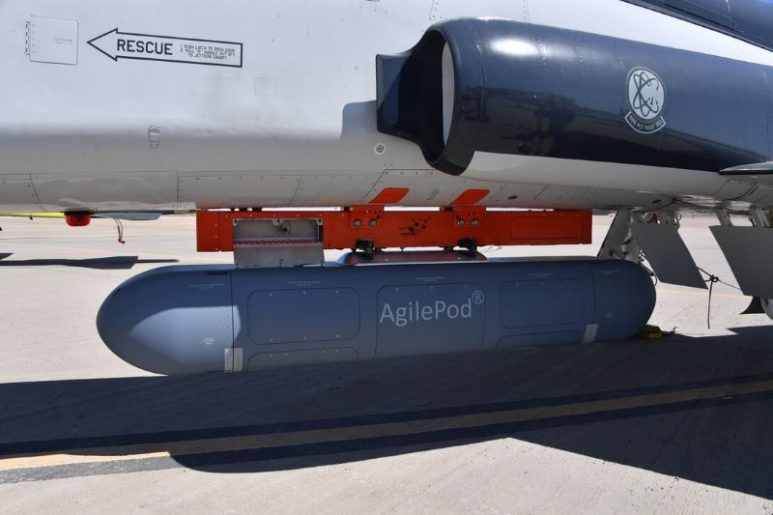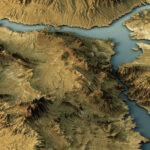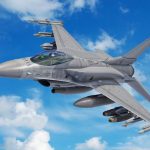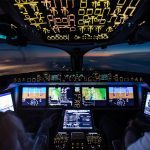The Air Force Strategic Development Planning & Experimentation Office demonstrated fused PNT technologies within an AgilePod during six successful Phase I sorties on an airborne testbed in Centennial, Colorado in April. It also successfully fit-tested the configuration on a T-38 at Holloman Air Force Base, New Mexico, ahead of planned Phase II flight tests in August. The Centennial sorties explored a concept of operations developed by Air Force Futures aimed to rethink the Services’ approach to PNT by adapting open software architectures with existing PNT technologies like vision navigation (VisNav), signals of opportunity (SoOP) and magnetic anomaly navigation (MAGNAV). The sorties successfully demonstrated that a fused VisNav/SoOP system could perform within the reconfigurable AgilePod throughout a wide range of aircraft and environmental conditions.
According to Maj. Andy Cottle, SDPE’s Operational Experimentation Lead for Complementary-PNT, “PNT isn’t a new challenge for the Air Force, but we know uncontested Air Force dominance isn’t assured and we can’t be complacent,” Cottle said. “This concept recognizes that a single alternative-PNT technology isn’t going to give us the edge against our adversaries as they attempt to disrupt traditional GPS sources; we need to think differently about ways to employ those technologies together to achieve our desired effects.”

The intelligence, surveillance and reconnaissance (ISR) pod is comprised of a series of 30-inch square compartments ranging in length from 28 to 60 inches. The compartments can be assembled in different configurations—similar in concept to Legos—enabling diverse sensor communication packages. Built to integrate onto Special Operations aircraft such as the MQ-9 Reaper UAV, it can also fly aboard pilot-operated aircraft.
Operators can pick the sensor equipment they need for a mission, configure the pod to accommodate their specific needs and deploy to collect multiple types of data. For example, high-definition video, electro-optical and infrared sensors and radar can be deployed in a single AgilePod, eliminating the weight that might accompany multiple pieces of equipment to do the same.
The pod takes advantage of the Blue Guardian Open Adaptable Architecture construct and Sensor Open System Architectures. Open architectures enable rapid integration of sensor technologies through standardized software and hardware interfaces that enable the pod to seamlessly integrate on platforms that use the standard architectures. This increases the number of missions the pod can augment, expanding the scope of ISR mission possibilities.
Current sensor capabilities on aircraft are built for specific mission tasks, such as close air support or targeting, using proprietary software and hardware. Open system architecture standards combined with a single AgilePod having ‘plug-and-play’ capabilities and configurations enables one pod to perform hundreds of different mission sets. This is key for cost savings and increased sustainability
Working alongside the Naval Surface Warfare Center, the Air Force Strategic Development Planning & Experimentation Office (SDPE) has taken forward steps toward making the Air Force’s new Precision, Navigation and Timing (PNT) concept of operations a reality.
Cottle stated that the Centennial tests were just the first phase in a series of flight tests aimed to rapidly explore the operational utility of this concept, adding that during the tests, the team will also assess the MAGNAV technology for potential incorporation in future tests. He added that in another important milestone, the team completed a successful fit-check of the AgilePod on a T-38 to prepare for Phase II flight testing at Edwards Air Force Base with the 586th Flight Test Squadron in August.
“This is what experimentation is about,” said Rudy Klosterman, SDPE’s Experimentation & Prototyping Division Chief. “We’re bringing together planners, scientists, engineers, and operators to rapidly – and for relatively small investments – explore competitive advantages, understand operational utility, develop CONOPS, and help the Air Force pivot as needed to ensure capabilities being developed meet the ever changing demands of the battlefield.”






